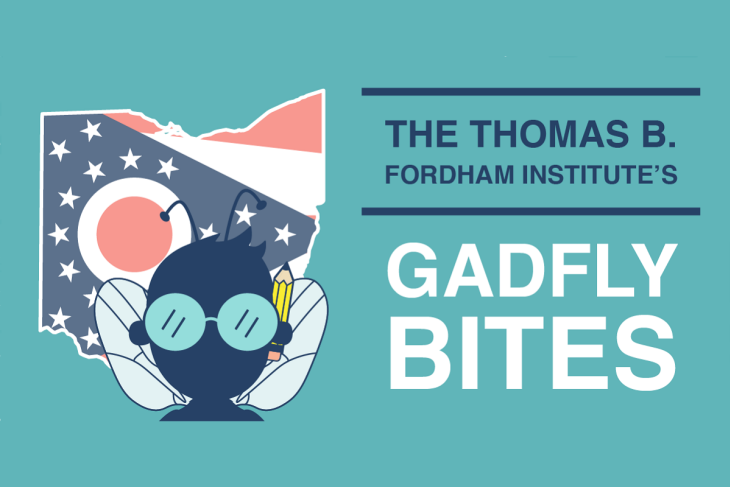- All y’all know that we love positive charter school stories here at the Bites. And we have the OG of charter school positivity—Toledo Maritime Academy—back in the news again. This is a great piece looking at a pair of successful students and their journey to and through TMA. Excellent, minus the pirate stuff. Not cool, man. (Toledo Blade, 8/9/20) The Toledo story was mainly pre-rona, I suspect, with a bit of additional follow up to discuss plans for the upcoming school year. This piece—a positive look at Richland School of Academic Arts—leans into the rona sitch as the school prepares to reopen hybrid-style for its 10th anniversary year on August 20. Interesting stuff, both the past and the future. (Richland Source, 8/9/20) Still no charter school positivity to be found in Kent. This piece on the city school district’s hybrid reopening plans takes pains to find and quote a family who chose the district’s remote option and not one of those dastardly online charters. (Record-Courier, 10/9/20)
- Speaking of remote learning, this is a very long story discussing the digital divide in the Miami Valley as experienced by students this spring. While the finger wagging assessment of “We’re paying now for years of not taking this seriously” is well taken from the National Digital Inclusion Alliance, it feels to me like most schools interviewed here have got a pretty good handle on the hardware and software side of it, having bought (or received donations of) Wi-Fi hotspots and enabled devices and having already delivered them to students whose need was identified way back in April or May. It is also interesting to note that the state’s point person on technology seems to not be worried about districts like Dayton or its high-dollar suburbs. He notes that while some schools spend $20,000 or more per year for overall education costs per student, others spend as little as $6,000 a pupil and that “[t]here’s no question that if you have more means that creates choices.” Fascinating. So it seems that the real question this fall could be less about access and more about effective use. You know: high-quality virtual curriculum, strong teaching, new material, homework, testing, proper grading, revision, and the like. Dayton City Schools superintendent Elizabeth Lolli sums up the story by talking about the difficulty of “…trying to fulfill the mission of a public school” without in-person teaching. Which makes sense, I figure. But since she only vaguely refers to one of the things on my list, I think she may mean something different than I do. (Dayton Daily News, 8/9/20) Speaking of same, an advocacy group in Ohio’s Appalachian region has convinced the state to eliminate a matching provision for its broadband expansion efforts which, they successfully argued, would have hit poor rural districts hard. Nice. (Columbus Dispatch, 8/9/20)
- The Ohio Department of Education is expecting a significant increase in the number of homeschooled students this year. This piece focuses on the place where, I expect, the push for homeschooling is the strongest:
Facebookthe suburbs. (Columbus Dispatch, 8/10/20) Here in the big city, we are learning that “community groups” are “partnering” with Columbus City Schools to make sure kids have “places to study” during extended remote learning this fall. Why all the hedging quotation marks from me? Because “community groups” seems to mean churches, “partnering” seems to mean deep into the execution of (including spending district funds for training and other stuff), and “places to study” seems to mean centers where volunteers will be doing teaching and tutoring all day every day. Anyone else have questions besides me? (Columbus Dispatch, 9/8/20)
Did you know you can have every edition of Gadfly Bites sent directly to your Inbox? Subscribe by clicking here.
Policy Priority:
Topics:




